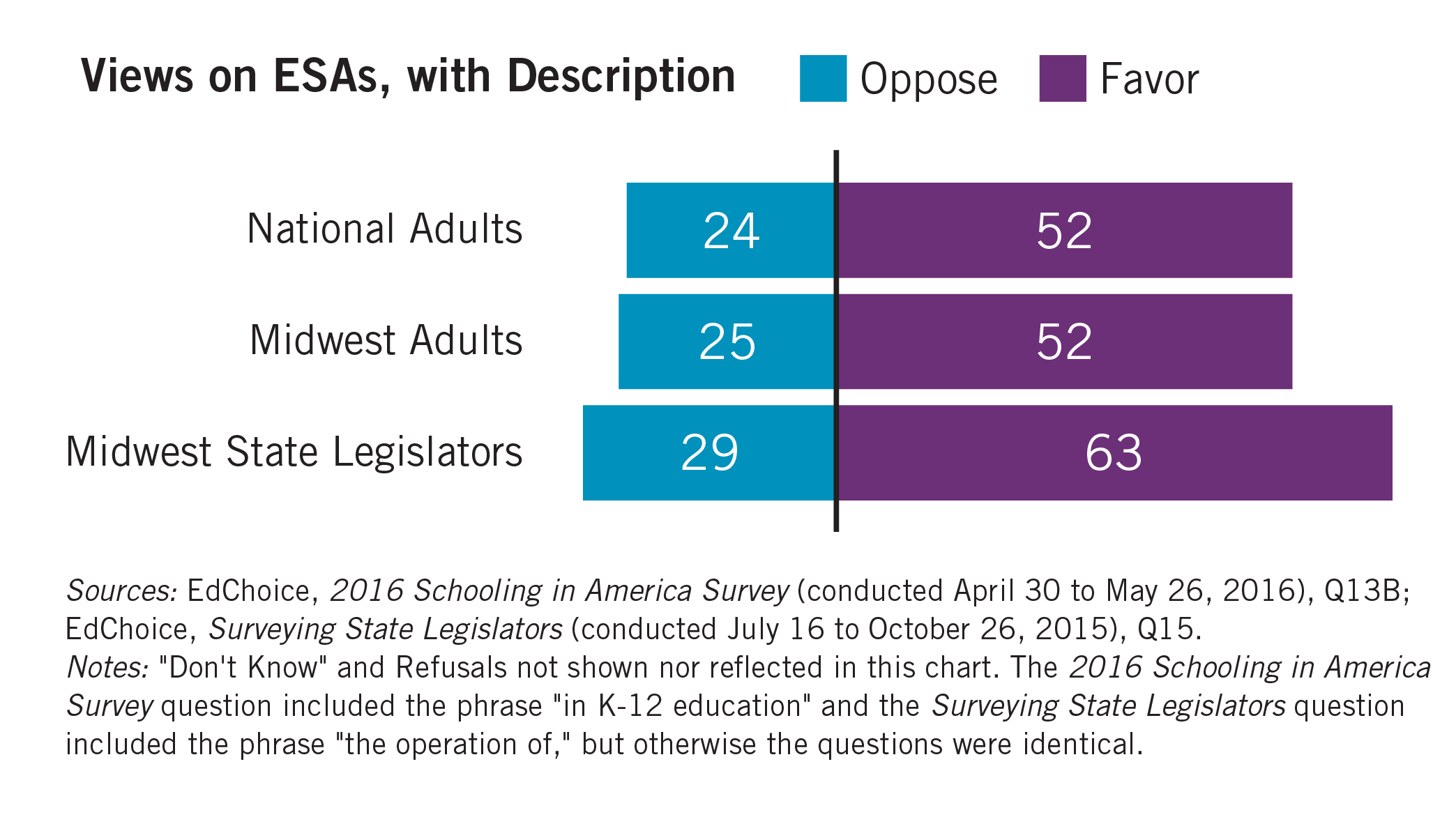Ohio Education Savings Account Bill Expands Choice, Consolidates Programs
Today, the Opportunity Scholarship Program (SB 85) was introduced in the Ohio Senate. The bill, if passed as introduced, would create the Midwest’s first education savings account (ESA) program.
Ohio currently has more voucher programs than any other state, and this bill would consolidate three of them: the Cleveland Scholarship Program—the nation’s second voucher program, with more than 8,500 participating students in 2016–17—the Educational Choice Scholarship Program—a statewide voucher program for students zoned to attend low-performing schools, with more than 22,800 students participating in 2016–17—and the Income-Based Scholarship Program—a statewide voucher currently for income-qualified students in K–3, with more than 7,800 students participating in 2016–17. The result would be one income-based ESA program starting in 2018–19.
The potential Ohio program would operate somewhat similarly to ESAs in other states. Here’s how it would work:
Student Eligibility
Students must be residents of the state who are eligible to attend an Ohio public school and whose families have incomes up to 400 percent of the federal poverty level ($97,200 for a family of four in 2016–17). The income limit would not apply to current voucher recipients under the Cleveland Scholarship Program, the Educational Choice Scholarship Program and the Income-Based Scholarship Program and their family members.
Once they receive an ESA, students would continue to be eligible as long as they annually take grade-level assessments, still meet the income limit and have no more than 20 days of unexcused absences in a school year.
Student Funding
Potential ESAs would be worth up to $5,000 for students in grades K–8 and $7,500 for students in grades 9–12. Students from families earning up to 200 percent of the federal poverty level ($48,600 for a family of four in 2016–17) would receive the full ESA amount, and students from families earning more than 200 percent but less than 400 percent of the federal poverty level would have awards calculated on a sliding scale. Students from families earning 400 percent of the poverty level would receive 50 percent of the award amount.
Students living in the in the Cleveland Metropolitan School District and current voucher recipients under the Cleveland Scholarship Program, the Educational Choice Scholarship Program and the Income-Based Scholarship Program and their family members would receive the full ESA award amount.
Allowable Uses
Funds may be used to pay for:
- Tuition and fees at an eligible private school (must be paid first with annual payments; any funds left unused and funds rolled over from previous years may be used for other categories)
- Online learning programs
- Textbooks
- Tutoring services
- Public school classes (as long as the student does not attend full-time)
- Community college costs
- Higher education expenses
- Fees for AP courses and exams
Unused funds may be rolled over to the next school year, which can continue until a student turns 25 years old.
Regulations
Parents must only spend funds on allowable expenses and must retain copies of receipts for at least five years.
Participating private schools must be chartered by the state, and they must administer the state assessments to ESA recipients.
What the Research Says
EdChoice has been polling the public on their views on K–12 education and school choice since 2010. Last fall, EdChoice Vice President of Research and Innovation Paul DiPerna released Surveying State Legislators. In his report, DiPerna examined the responses of 344 state legislators to questions about education policy, the profession and more.
The 100 Midwest state legislators that responded to the survey were asked if they favored or opposed ESAs. More than three-fifths of the respondents in the Midwest (63%) said they favored ESAs and more than one-fourth (29%) said they opposed ESAs.
The below chart shows state legislators’ favorability toward ESAs and survey responses from our 2016 Schooling in America Survey, which had an entire national sample of 1,001 adults and a sample of 215 adults in the Midwest. More than half of adults in the Midwest favor ESAs (52%), which is on par with the 52 percent of all adults. However, a slightly larger percentage of Midwesterners are opposed to ESAs (25%) compared to all Americans (24%). Although every state is unique, it is good to see that Midwesterners are keeping pace on favorability towards ESAs compared to the rest of the nation, and it is uplifting to see that Midwestern state legislators favor ESAs at a higher percentage.

A few years ago, I analyzed data collected by the Ohio Department of Education and found, as showcased in my report Exploring Ohio’s Private Education Sector, that 48 percent of all private schools in the state in 2014–15 (498 of 1,045 schools) were registered to participate in at least one of Ohio’s school choice programs. According to the Ohio Education Directory System, there are 711 private schools chartered by the state that are currently open. Those are all schools that could potentially participate in the ESA program.
The Birthplace of Aviation has a chance to offer educational choice to more K–12 students in the state, and we here at EdChoice thank the legislators who are paving the way for Ohio to continue being a leader in educational choice.




